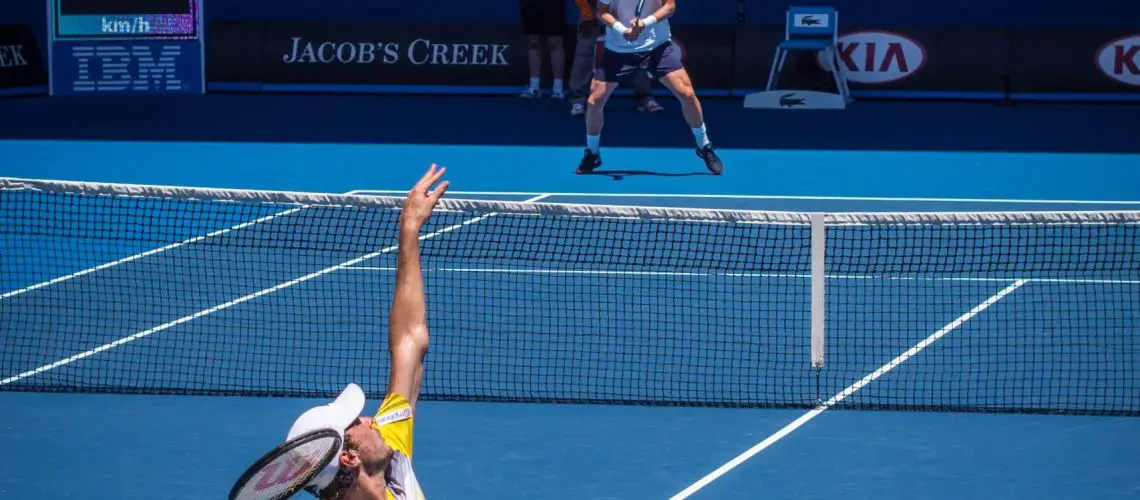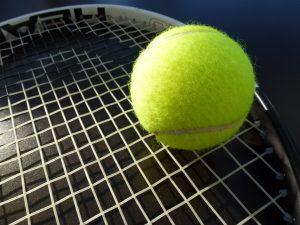We may earn money or products from the companies mentioned in this post.
Brief History of Tennis Balls

Tennis, a sport that has captivated players and spectators for centuries, wouldn’t be complete without its essential accessory – the tennis ball The history of tennis balls stretches back to ancient times when early forms of the game were played using rudimentary equipment
Early Forms of Tennis Balls
In the beginning, tennis balls were crafted using materials such as leather and wool These primitive versions had a limited lifespan due to their tendency to wear out quickly However, they laid the foundation for future innovations in ball design
The breakthrough came with the introduction of rubber This elastic material revolutionized tennis ball production, providing a more durable and consistent playing experience Rubber allowed for better bounce and enhanced control on the court, making it an instant hit among players
Evolution of Color in Tennis Balls

White and Black Tennis Balls
For many years, tennis balls were predominantly white or black The white color was favored by traditionalists who believed it added elegance and sophistication to the game On the other hand, black balls were mainly used in indoor settings where visibility was less of a concern
These monochromatic balls served their purpose well but soon faced criticism for their lackluster visibility on television broadcasts and in low-light conditions As technology advanced and the demand for improved visibility grew stronger, manufacturers began exploring alternative colors
Change to Green/Yellow
In response to these demands, tennis balls underwent a significant transformation in color – from white or black to vibrant shades of green or yellow This change not only enhanced visibility but also added an element of excitement to matches, making it easier for players and spectators alike to follow the action on court
The adoption of green or yellow tennis balls became widespread, and they are now the standard in professional and recreational play The change in color not only improved visibility but also symbolized the evolution of the sport, bringing a fresh and modern look to tennis
In conclusion, the history of tennis balls is a testament to the constant pursuit of innovation and improvement within the sport From humble beginnings with leather and wool to the introduction of rubber and the transition to green or yellow, tennis balls have come a long way Today, they are an integral part of every match, ensuring an exciting and dynamic playing experience for players and spectators alike
The Science Behind the Color

When it comes to perceiving color, our human vision plays a crucial role The intricate structure of our eyes allows us to experience the vibrant world around us in all its hues and shades
Structure of the Eye
Within our eyes, we have specialized cells called rods and cones that are responsible for detecting light and converting it into electrical signals that our brain can interpret as color
Rods are highly sensitive to light and help us see in low-light conditions, but they do not contribute much to color perception On the other hand, cones are responsible for our ability to perceive colors with precision
Color Perception Theories: Trichromatic Theory vs Opponent-Process Theory
To understand how we perceive color, scientists have proposed two primary theories: the trichromatic theory and the opponent-process theory
The trichromatic theory suggests that we have three types of cones in our eyes, each sensitive to different wavelengths of light: red, green, and blue These cones work together to create a wide range of colors by combining their responses
In contrast, the opponent-process theory suggests that when it comes to perceiving color, certain pairs of colors oppose or cancel each other out For example, red opposes green and yellow opposes blue This theory explains phenomena such as afterimages – when you stare at a bright image for some time and then look away, you may see a negative image in complementary colors
Wavelengths and Light Absorption
The perception of color is heavily influenced by wavelengths of light Different colors correspond to different wavelengths within the electromagnetic spectrum
In particular, let’s take a closer look at the yellow-green spectrum wavelength range This range of wavelengths is known for its optimal visibility and is often used in various applications, including traffic lights and caution signs
Optimum Visibility Requirements
Considering the importance of color perception in various scenarios, it’s crucial to meet optimum visibility requirements for players, spectators, and television viewers
For example, in sports events, ensuring that players can easily distinguish between different team jerseys or equipment colors can greatly enhance their performance Similarly, providing spectators with clear visibility of the action allows them to fully engage with the event
Moreover, when it comes to television broadcasts, proper lighting conditions and color contrast play a significant role in delivering an immersive experience to viewers at home
The Official Color: Optic Yellow-Green Tennis Balls

When it comes to tennis, the color of the ball may seem like a trivial detail However, the International Tennis Federation (ITF) regulations have specific requirements for ball color These regulations ensure consistency and fairness in the game, as well as optimal visibility for players and spectators alike
ITF Regulations on Ball Color
The ITF has outlined detailed specifications for tennis balls, including size, weight, bounce, deformation, and color While there are different approved colors for tennis balls, the official color designated by the ITF is optic yellow-green
Advantages of Optic Yellow-Green over Other Colors
Why did the ITF choose optic yellow-green as the official color? There are several advantages that this vibrant hue offers over other colors
Contrast against Court Surfaces
Tennis is played on various court surfaces such as clay courts, grass courts, or hard courts The optic yellow-green color stands out against these different surfaces, making it easier for players to track the ball’s movement during a match Whether it’s the red clay of Roland Garros or the lush green grass of Wimbledon, optic yellow-green provides excellent contrast
Visibility in Various Lighting Conditions
Tennis matches can take place under different lighting conditions – from bright daylight to night matches with artificial lighting Optic yellow-green tennis balls are designed to be highly visible in all lighting scenarios The vibrant color helps players quickly spot and react to shots even when faced with challenging shadows or low light conditions
Common Questions and Misconceptions About Tennis Ball Colors

Why are they called “green” when they appear yellow?
One of the most common questions regarding tennis ball colors is why they are referred to as “green” when they actually appear to be yellow The confusion arises from the fact that tennis balls have a vibrant, optic yellow-green hue However, the perception of color can vary depending on lighting conditions
When tennis balls are exposed to indoor lighting or viewed under artificial lights, they tend to appear more yellow than green On the other hand, in natural sunlight, the green tones become more pronounced This difference in appearance has led to the use of both “green” and “yellow” to describe these tennis balls
Are all tennis balls optic yellow-green?
No, not all tennis balls are exactly the same shade of optic yellow-green While there is a standard color specification for professional tournaments, manufacturers may produce slight variations in shades
Different manufacturers might have their own proprietary pigments or dye formulations that result in subtle differences in color intensity and tone These variations should not significantly affect gameplay but can make each brand’s tennis balls visually distinguishable on the court
Can other colors be used for recreational play or practice?
While optic yellow-green is commonly associated with professional and competitive play, there are alternative colors available for recreational play or practice sessions
For beginner players or those seeking a slower-paced game, low-compression balls in red, orange, or green can be used These alternative colors indicate different levels of compression and bounce characteristics suitable for players at different skill levels
Environmental impact & sustainability concerns related to ball production
The production of tennis balls, like any manufactured product, has environmental implications The materials used in tennis ball construction, such as rubber and synthetic fibers, have a carbon footprint associated with their extraction and processing
However, efforts are being made to address these concerns Recycling programs for used tennis balls have been established to reduce waste and extend their lifecycle Additionally, awareness campaigns within the tennis community aim to promote sustainability practices and encourage players to be conscious of the environmental impact of their equipment choices
By considering the entire lifecycle of tennis balls and implementing sustainable practices, we can contribute to minimizing the environmental footprint of this beloved sport
Useful Links

Why Are Tennis Balls Yellow or Green in Colour?
“They are green.” “They are yellow.”
Are tennis balls yellow or green? | dot color
Why Are Tennis Balls Yellow and Other Tidbits
What’s the real color of a tennis ball? Science has the answer.
Are Tennis Balls Green Or Yellow? – YouTube
CMV: Tennis balls are green. : r/changemyview
Tourna Kids Green Dot Pressurized Tennis Balls, 12 Cans
What color are tennis balls? Roger Federer says yellow
What Color Is A Tennis Ball?
What tennis level
Why are the tennis balls yellow and not green or red?
What Color Are Tennis Balls, Yellow or Green? Roger …
78 Green Dot – Balls
Vermont Mini Green Tennis Balls [Stage 1] | ITF Approved …
What colour do you think these tennis balls are?
Wilson US Open Green Transition Ball Tennis 6 Can Pack .
Karakal MID Two Tone Transition Tennis Balls in Green & …
Are tennis balls green or yellow? The internet can’t decide





